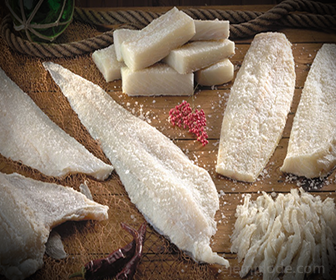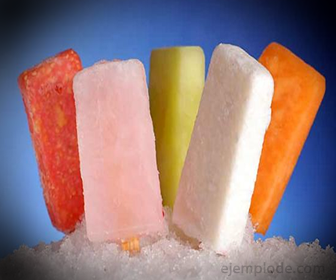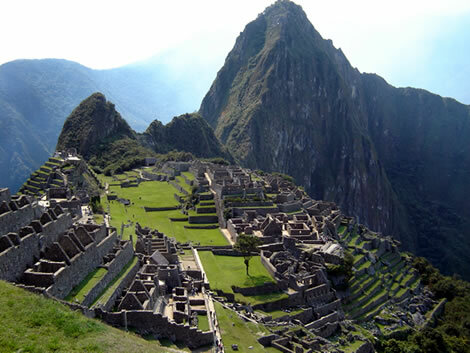Uses of Salt
Chemistry / / July 04, 2021
The Common Salt, known as Table Salt, is chemically constituted by Sodium Chloride NaCl, one of the chemical compounds of the most abundant sodium on the planet. It is also noted for its ionic character. Sodium Chloride is perhaps the Ionic compound more representative.
As a chemical compound, it has a Molecular Weight of 58 g / mol, a Melting point at a temperature of 802 ° C.
Characteristics of Salt
Salt, Sodium Chloride NaCl, is one of the most abundant mineral substances on our planet. Seawater contains 2.8% Sodium Chloride, and even more that of some lakes and inland seas (for example, 17.5% of the Dead Sea; 17.7% that of the great Salt Lake, in Utah; and 20.8% that of Lake Elton, in the Soviet Union).
During the Geological Ages, the evaporation of water from the inland seas has given rise to large deposits of salts in different parts of the world. Under the soil of Oklahoma, Kansas and Texas, for example, there are extensive saline deposits 120 to 150 meters thick, and in the Suria-Cardona region there are also important saline deposits.
The Gem Salt (Sodium Chloride) is usually the main component of such deposits. Other large North American Gem Salt deposits are found in New York, Michigan, Louisiana, California, West Virginia, and Ohio.
In the United States, most of the salt is obtained from saline deposits, and very little from seawater. The salt is extracted through galleries or water is introduced into the salt layer to form a concentrated solution, which is raised to the surface with the help of pumps and allowed to evaporate.
When the salt crystallizes, the impurities remain in the residual solution (mother liquor). Pure salt is not a hydrate, nor does it absorb water. However, it does contain some magnesium chloride MgCl2, which is Hygroscopic (draws water from the air) and tends to agglutinate it. In order to prevent this absorption of water and obtain a salt that flows perfectly, starch can be added to coat the grains of salt, or sodium bicarbonate NaHCO3 to convert magnesium chloride MgCl2 in carbonate MgCO3, which is not hygroscopic.
I know Take advantage of the sun's heat to evaporate the waters of the Great Salt Lake, where 100 thousand tons of salt are benefited annually. In tropical countries, salt is obtained by evaporating seawater in the sun.
Sodium Chloride, also called Common Salt or Table Salt, is a indispensable component of food, origin of the hydrochloric acid contained in the gastric juice, and an integral element of the blood. Large amounts of salt are consumed to preserve meat and fish, as well as for manufacture Hydrochloric Acid, Sodium hydroxide and other Sodium and Chlorine Compounds.
Examples of Uses of Salt
What Electrolyte, to conduct an electric current in an aqueous solution.
What Rehydrating agent. If salt is dissolved in water and the solution is ingested, an athlete who has just finished training will be able to replace his salts lost through sweat, faster than if he only drank water.
What Food conservator. In the Middle Ages, it was used in large quantities, spread on the surfaces of food, so that it would last longer in good condition, without decomposing.

In order to intensify flavors in food. It is added in small quantities, so that it generates a more powerful sensation in the sense of taste when ingesting those.
In order to Manufacture Hydrochloric Acid. It is very easy to use Sodium Chloride as a chemical reagent, since its atoms can be separated in an accessible way, and they can be joined to others that become involved.
Leaving it to rest on a garment for a while, it has the absorbent property that allows Remove stains.
In order to Increase Boiling Point of the water. The more the Salt is concentrated in the Water, the better it will retain it and prevent its early boiling, bringing the boiling point several degrees Celsius above 100 ° C.
What Color Fixer in the textile industry. Its ability to ionize generates electrostatic forces that allow the particles of Colorant are attracted to the garment.

In the Ice Cream Factories; when the flavored popsicles are to be frozen, the filled molds are immersed in containers with a solution concentrated Sodium Chloride, which can be at subzero temperatures without freezing, remaining liquid. The immersion of the molds in it makes the popsicles freeze faster.

What Nasal lubricant and moisturizer. A solution of Sodium Chloride is sprayed into the nostrils to keep them lubricated and moist.

